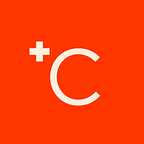Observations and Reflections: The First Six Months at Citizen
By Ryan Mowery | Originally Published on pluscitizen.com
Initially, when UX Director Kevin Gask asked me to reflect on my first six months at Citizen, I was stumped on what to write.
The story felt too simple, even a bit self-indulgent. I love the job, the company, the crew, and the work is very challenging and greatly rewarding. However, by the time I had finished, I realized I’d come a long way in the last six months.
MOTIVATION
Before joining the Citizen team, I realized I had pushed myself, as a designer, to a creative plateau. Being a lead on my previous design team had a lot of perks and was very fun, but I had gradually become a bit too cozy and complacent. I needed to keep growing, find new challenges, and learn all the things I didn’t know I needed to learn. It was time to re-energize my passion and drive. I wanted to work with the best people in the industry so they could kick my ass and show me how to be better. So I took a risk, leaving a comfortable job behind to discover new challenges.
ROLE
I felt serious chemistry with the Citizen team during the interview process and, since I was hired, it has carried over into my day-to-day. I hit the ground running as an interaction designer — working primarily on mobile applications for our healthcare and finance clients. These industries have monumental cultural and economic influence and require a lot of focus and consideration. The constraints and obstacles are significant, but the tools we are developing can have a serious impact on people’s daily lives.
I feel lucky to do this work. I’m humbled every day to be working with some of the creative industry’s top talent, on projects that I truly believe in. Some days, I soak up so much new information that my brain buzzes.
LESSONS LEARNED
1) Formal Documentation Methodology
In the last six months, I have notably altered the way I keep track of information and functionality in my projects. In the past, I relied primarily on prototypes and face-to-face conversations with my team and our clients to discuss my ideas and functional requirements. Now, everything I work on comes with a formally annotated document, containing clear indicators of the version and stage in the project. While creating these documents can be time-consuming, they keep everyone up to date and it provides the team with an authoritative source of truth whenever questions come up.
2) Focus
My background is a combination of visual and interaction design. Joining Citizen, I decided to focus more on the interaction and experience design and less on the visual design side of things. Narrowing my focus has been fantastic, but I underestimated how challenging focusing would be. I didn’t account for how interdependent the visual design and interaction design disciplines were in my head. In past roles, being responsible for both disciplinary outputs gave me a lot of control and flexibility. Now, the core user experience has to be airtight before moving on to the visual portion of the project.
3) Room to Fail
There have been a handful of days when I’ve left the office feeling like I’d failed, that I’d let my team down, and soon they would realize the horrible mistake they had made. But I’ve come to realize that in order to grow, you have to accept that there will be failure along the way. Each time I fail, I’m reminded that it always positively impacts the learning process. I am getting comfortable with being uncomfortable. Citizen has fostered an environment that not only allows–but encourages–employees to take chances, even if they sometimes result in failure.
4) Earn It
My time here at Citizen has also taught me the value of earning your position. Every organization has a way of operating. Just because you’re a designer or creative leader at one agency doesn’t mean you are automatically qualified to be a designer or creative leader at another. Great design is achieved through a balance of usability and visual appeal. Finding this balance is unique for each client and project. The intricacies of each industry require different solutions, but client relationships are always key. Without the trust of your team and your clients, you can’t deliver inspired and compelling work.
FUTURE
It’s an exciting time to be an interaction designer. The combination of access, data, and speed allow for infinite possibilities. I’ve moved past the creative plateau and I’m still absorbing new skills and knowledge every day. Most recently, I’ve started to research augmented and virtual reality design and I’ve doubled my Audible.com subscription to step up my research. This work is always changing and evolving. That’s one of the primary reasons I continue to do this work: it forces me to keep evolving.
